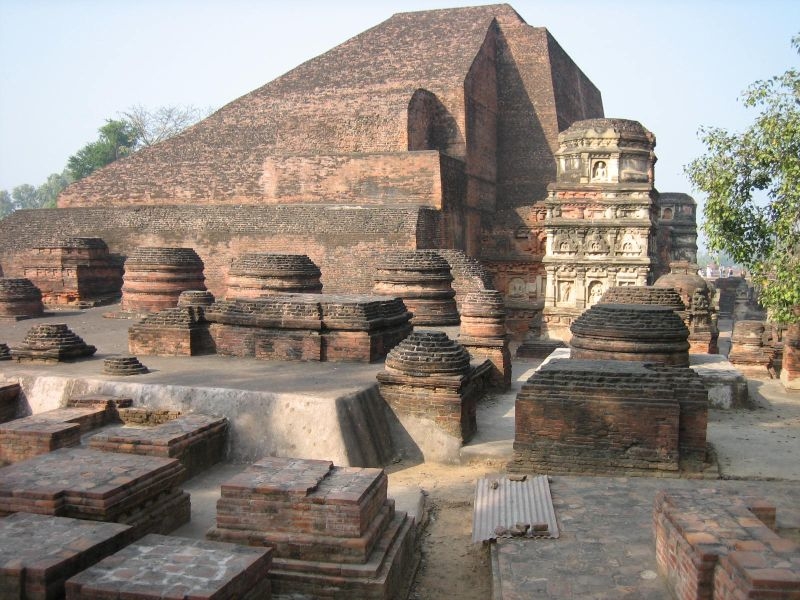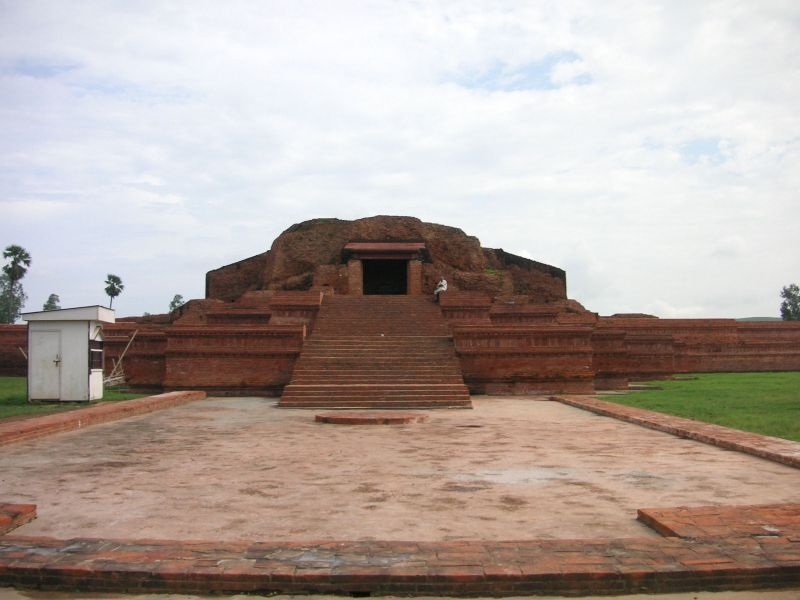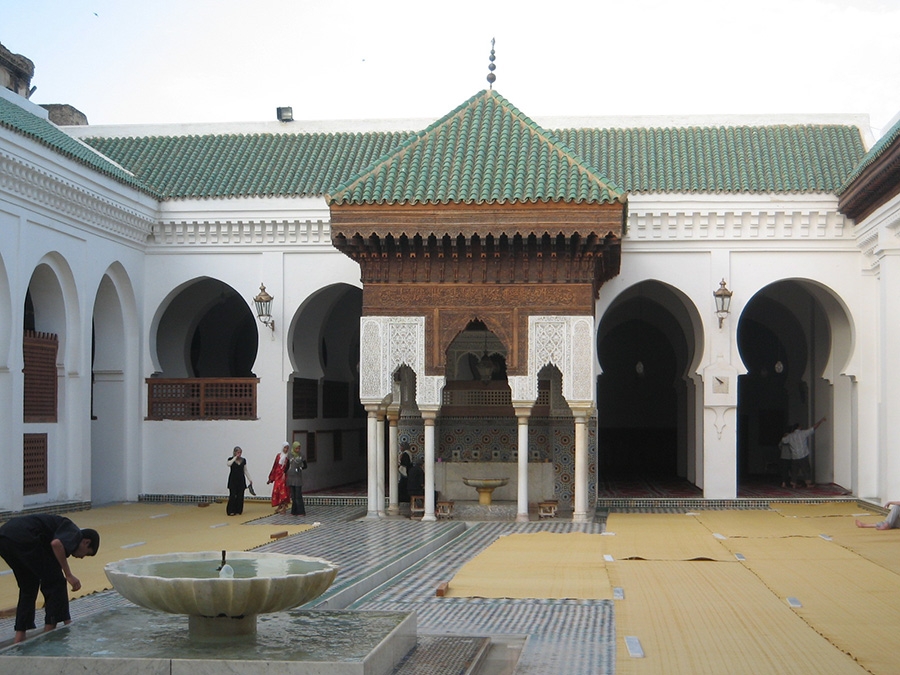Whenever we think of education , the ideas of school, colleges and universities come into mind. But very few people know, which are the oldest Universities of the world. The word University, originated from the Latin word “Universitas” which refers to number of persons associated with a body or society. But the facts remains, that the concept of University was not just restricted to western world, in fact most ancient universities originated in the eastern world -- the cradle of civilization. To do justice to all, irrespective of country, caste and creed ; let us check the Universities depending on their Geographical location.
The story starts in India – The land of mystics and Vedic charms, it was here that, the first University of the world started.
Eons ago, India, emerged as a torchbearer to the world because of its vast riches and enormous knowledge, not necessarily in that order. The reason was due to the presence of an erudite statesmen, who lead the country, in different spheres of the society. Their presence was greatly contributed by the Guru and Gurukul traditions of ancient India. In this context Takshashila university (Modern day – Taxilla- a name given by Greeks, during the time of Alexander the great’s conquest ) was the forefront factor.
Located in modern day Pakistan, at it’s heyday, Taxilla was the epitome of Indian scholarly aspirations. Established almost 2700 years back, it was the world’s first University. According to Hindu Mythology, Takshashila was founded by Bharata, the young brother of the legendary God King – Rama ( The main character of Hindu epic Ramayana ) and given to his son Taksha, to govern. Mythology apart, ruins of Indus Valley Civilization, dating about 5000 years old have been found in the nearby areas. Gradually Taxilla, emerged as an independent city state, which frequently changed hands, due to political aspirations of the kings of that era.
It was around 700 BC, that the University was established. It has been said that at it’s peak over10,500 students came from different parts of the world, to attain mastery over different variety of subjects like – Vedas, grammar, Ayurveda, Surgery, philosophy ,politics, archery, warfare, astronomy, commerce, law and music and range of other subjects. Some of the famous scholars who were part of this university are – Chanakya (The teacher of Chandragupta Maurya – the emperor who founded India’s first empire) , Panini (The great scholar of grammar and Sanskrit ), Charaka (The great ayurvedic healer), Jivaka ( The great physician of Magadha empire, who reportedly even treated Buddha ) and Vishnu Sharma. The greatest beauty of the University was that it was totally out of control of local rulers and the teachers had total freedom in their work. Education was not sold, and it was free of cost. Money came in form of financial grants from the wealthy members of the society.
It was established around early 5th century ( in the province of Bihar, in eastern part of Modern day India) by Shakraditya of Gupta dynasty. Although it was established under patronage of Kings of Gupta Dynasty ,it flourished for another 600 years in spite of change of regional power. At it’s peak students from nearby countries like China, Tibet, Korea, Japan, Indonesia came to study here. The University was under a profound influence of Buddhism, and it was an integral part of academic curriculum. Other subjects being taught were Sanskrit grammar, medicine, literature, logic, astrology and astronomy. This University is supposed to have the largest library of the ancient world , consisting of three large multi-storeyed building. Aryabhata , the great mathematician and astronomer, was a distinguished teacher of Nalanda University. Nalanda was destroyed around 1200 CE by an army of Delhi Sultanate.

Vikramashila University was founded by King Dharampala of Pala Dynasty, in 8th Century in an area, which is situated in Bhagalpur district, in Bihar province of Modern Day, India. It was a contemporary of Nalanda University and may had provided some strict competition. It was one of the largest Universities of it’s time with more than 100 teachers and more than 1000 students. Subjects like grammar, logic, philosophy were taught in this University. It spread and flourished for 400 years, when around 12th century it was destroyed by invading army of Delhi sultanate.

It was established in 6th Century, in Saurashtra area, in the western Indian province of Gujarat. It was a great centre of learning and at one time was considered to be rival of Nalanda University, in terms of respect and stature. It prospered for 600 years till 12th century. At it’s peak in 7th century there were more than 6000 monks studying in the place and students from all part of the world came to study here. The graduates of this University were highly respected and got distinguished positions in courts of many nearby kingdom.
This ancient buddhist centre of learning was established around 3rd century, in old kingdom of Kalinga ( In Jajpur district, in modern day eastern province of Odisha ). The Pushpagiri area consisted of three adjoining hilly areas , namely - Udayagiri, Lalitgiri and Ratnagiri. Scholars consider that this place of learning in ancient India, had similar importance to the other old universities like – Nalanda, Taxilla, Vallabhi and Vikramshila Universities. This university also succumbed to the ravages of time and invaders and finally disappeared in 12th Century.
Established in 8th century in Magadha Kingdom (Presently in the eastern province of Bihar in Modern Day, India) by kings of Pala dynasty and prospered for the next 400 years, finally perishing at the hands of foreign invaders. Historical texts reveal that at it’s peak it had 12,000 students studying in the University. It was a premiere centre of Buddhist learning in addition to the centres previously mentioned.
Built by the Pala King – Dharamapala, during the 8 th century, it is located currently in Bangladesh, but previously was in undivided India, and was a great Buddhist learning centre with contribution from Hinduism and Jainism . The University was spread over an 27 acres of the land, of which the main complex itself was of 21 acres. But ravages of time contributed to it’s decline and collapse in 12th century.
It emerged as a centre of learning in city of Gondeshapur ( situated in modern day Iran) around 6th century AD. The credit for establishing and credibility of the academy goes to the Sassanid emperor – Khosrau 1 , who changed the city into a premiere learning centre and a place for medical referral. It was a time of political upheaval in the neighbouring areas, and the emperor gave sanctuary to lots of eminent scholars fleeing persecution. These scholars translated Greek and Syriac text for medicine, astronomy and philosophy to local language. Even Indian scholars were invited to share their knowledge on astronomy, astrology, mathematics and medicine (& Indian text translated). In the 9th century, the city came into Islamic rule and the initial rulers did their best to preserve the cultural heritage, but gradually most of the intellectual activities shifted to Baghdad and Gondeshapur disappeared into oblivion. In the modern times, the ruling house of Iran under Pahlavi Dynasty, tried to revive the glory of Gondeshapur by creating Jondishapur University & Jondishapur University of medical sciences, near the city of Ahvaz in 1955.
The University of al Quaraquiyine is located in Morocco, North Africa. It was established in 859AD, by daughter of a wealthy merchant, who dedicated her entire inheritance to create a mosque and a madrasa. The madrasa become one of the most important centres for education and spiritual pursuit in historic Muslim world. According to UNESCO and Guinness Book of World Record , it is described as the oldest existing educational institution which is still continually operating and awarding degrees to it’s students. The focus of study in this institution is on Islamic Religion, Law, grammar and language, mathematics, medicine and astronomy. The madrasa has produced numerous scholars, who had great influence in the course of Muslim world ; Ibn Khaldun (founder of sociology) and Pope Sylvester II were some of it’s distinguished students. The mosque associated with the University is largest in Africa, with capacity for 22,000 followers. The library has collection of over 4000 rare books and ancient manuscripts.

Al- Azhar University is situated in Egypt, and was founded in 970 AD. Initially it was founded by the rulers of Fatimid caliphate as a centre of Islamic learning, where students studied the Holy Quran and Islamic Law, grammar and logic. The mission of this university was to popularize Islamic culture and Arabic literature. Although as a modern University, it does have secular subjects in it’s curriculum. In 1961, Al Azhar was again established as a University by President Abdel Nasser, who in tune with the modern world, tried to give the university a more secular nature and broader appeal and hence introduced subjects like – Medicine, Pharmacy, Engineering, Science, Economics and Business. At present more than 4000 teaching institutions of Egypt are affiliated to it.
Founded in 1088AD, in Italy is one of the oldest continuously functioning Universities in Europe and western world. Initially it was set up to study Roman laws. Over the years a lots of modifications have happened both in organization and the subjects being taught. Now the University is divided into 33 departments and 11 schools. It has distinguished students like – Pope Alexander VI, Pope Innocent IX, Pope Gregory XV to name a few. At present it has more than 40,000 students is considered as the most prestigious Italian University.
Located in Oxford, England was established in 1096AD. So it can be considered to be the oldest University, in English Speaking world. One of the reason, for it’s initial growth was because of the ban placed by, King of England Henry II, who prohibited his subjects from attending University of Paris in 1167. One of the turning point in it’s history was in the year 1167, when dispute between the university students and townspeople, caused some members to migrate to neighbouring Cambridge, finally leading to establishment of “University of Cambridge”. In the modern world Oxford University is considered to be one of the most, prestigious universities of the world ; it has produced many Nobel laureates, scientists and head of state around the world.

Located in city of Salamanca, Spain, the university was founded in 1134AD. It is the oldest University in Spanish speaking world. Like most old western European Universities, it had a humble origin as a cathedral school and gradually grew into a University. It is to be noted, that when Christopher Columbus was trying hard to get the help of Spanish Royalty for his voyages to the west, he met Geography experts in University of Salamanca, and tried to convince them of his plan. During the beginning of 18th century, there was a gradual decline in standards of the University and it’s recognition. The University still exists although in much changed form. At present humanities and language studies, economics and laws form the core focus of studies down there.
It started in 1150AD as a cathedral school of Notre Dame de Paris, France. It is considered to be one of the oldest Universities of Europe. During the French revolution period, the University was closed down (1793). But pretty soon in 1806, the University was restarted in a new form with four faculties. In 1970, the university was again divided into 13 different Universities.
Although people may have differences about, what are the basic fundamentals to classify a teaching institution as an University and if these ancient universities indeed fulfilled all those criteria’s ; but the fact remains, that all the above Universities played an important part for the human race to be in the place, where we are today ; & they will be forever etched in the heart and mind of the people whose culture and history they changed for ever.
(Disclaimer – We respect all religion, and believe people irrespective of their caste /creed /religion, should be treated with equal respect ; hence an equally balanced attitude has been maintained, while describing all the Universities)